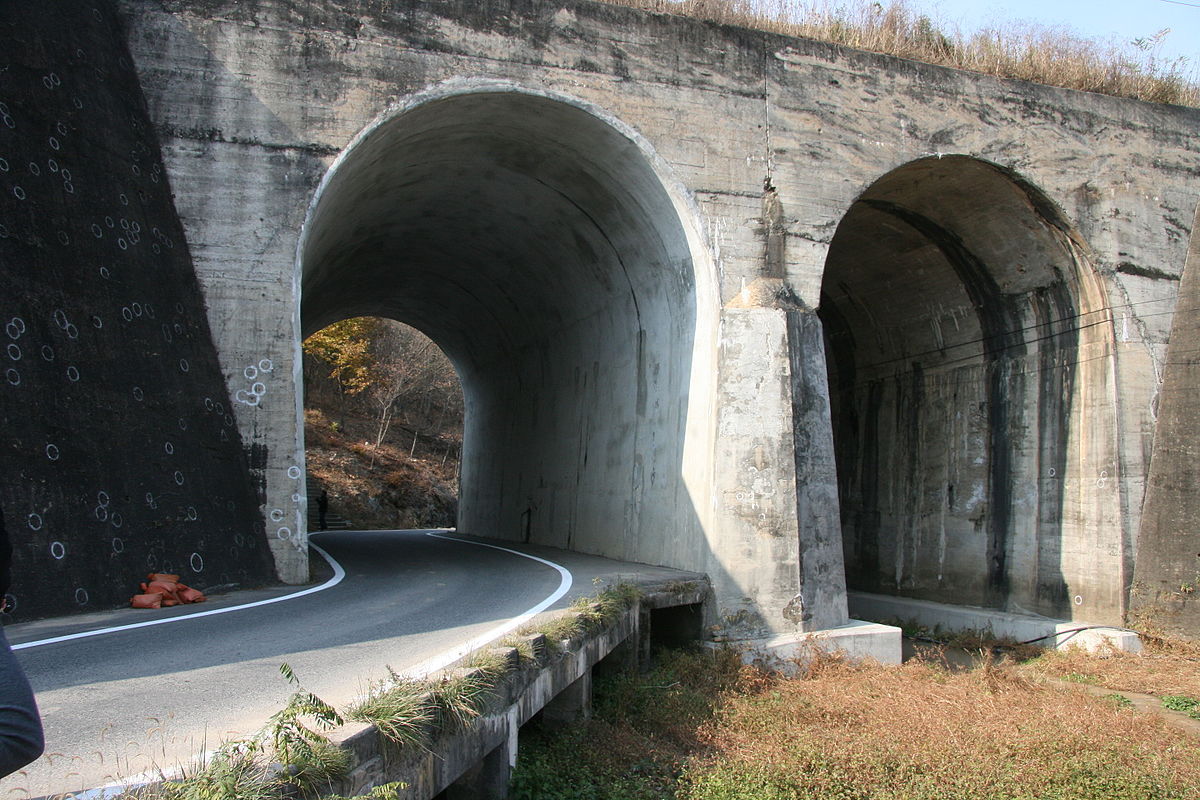No Gun Ri massacre; 老斤里良民虐殺事件; 노근리양민학살사건
No Gun Ri massacre; 老斤里良民虐殺事件; 노근리양민학살사건

Railroad bridge at No Gun Ri, South Korea
The No Gun Ri massacre was a mass killing of Korean refugees that happened during the Korean War by American soldiers, the 2nd battalion, 7th Cavalry Regiment at the late weeks of July in 1950. No Gun Ri is a small village in South Korea, 100 miles southeast from Seoul. US government determined that an unknown number of Korean refugees were killed and the Korean government identified 163 dead or missing refugees and 55 wounded. The survivors alleged up to 500 refugees were killed.
The survivors claim that American soldiers and a Korean police officer forced villagers to evacuate Chu-Gok Ri on July 23, 1950. The villagers moved to Im-Gye Ri until July 25, when Americans forced them to evacuate again, but left them during the night. On July 26, the refugees continued south to No Gun Ri, where they encountered another group of American soldiers. These American soldiers searched their belongings on a railroad track, and then departed. Suddenly, U.S. aircrafts strafed and bombed the refugees, killing approximately 100 and destroying their supplies. The surviving refugees fled underneath the twin railroad underpass tunnels over a stream. One survivor recalled, “We thought it was safe. The tunnel I was in was packed with people. I saw people from my village and thought it was okay. Then the shooting came. . . . the shooting was from both sides. When there was shooting coming from one side, we rushed to the other side. But the bullets came from that side, too. We could not even raise our heads. We just dug under dead bodies.” After periodically firing into the tunnels for four days, the U.S. soldiers retreated on July 29.
Over the years, the Korean survivors of the massacre and their family members tried to publicize their stories. They took pictures of the traces of gun fire on the massacre site soon after the event, collected copies of newspaper articles and chapters from history books that mentioned the refugee killing or the battle in Yong-dong to which No Gun Ri belongs, and collected survivors’ oral histories. Eun-yong Chong, a survivor’s husband, used this collection of evidence along with his own research to publish a factual novel called Do You Know Our Agony?(그대, 우리의 아픔을 아는가?) in 1994. During the 1990s, thirty South Koreans filed several petitions to the U.S. government, demanding an investigation of the incident at No Gun Ri and compensation for its victims. The U.S. government denied these petitions on the premise that there was no evidence to substantiate the Koreans’ claims. This series of actions were caught by a journalist of a political magazine, Mal (말), in Korea. And, this was relayed to another journalist, Sang-Hun Choe, the Korean correspondent for the Associated Press (AP).
Choe, and three other AP reporters, Charles Hanley, Martha Mendoza, and Randy Herschaft conducted interviews with veterans and survivors and searched for archival materials. Finally, the AP published an investigative report about No Gun Ri on September 29, 1999, drawing great attention of readers which evoked a flow of discussions and controversies about the incident around the world. The report, covering the survivors’ allegations and the U.S. military’s denial, appeared on the front pages of major newspapers including the New York Times and Washington Post, prompting both U.S. and Korean governments to react. In April of 2000, the sensational AP story won the Pulitzer Prize for investigative reporting.
The U.S. government has changed its attitude from rejections and rebuttals of the petitions in the 1990s to the statement of regret made by President Bill Clinton. In January 2001, the U.S. Department of the Army published The No Gun Ri Review, concluding that a tragic incident occurred at No Gun Ri with the killing of unknown numbers of Korean refugees by the U.S. force, but that it was not a deliberate order from the chain of command. The final report of the Korean Ministry of National Defense, The Report of the No Gun Ri Investigation (노근리사건 조사결과 보고서), had a more open conclusion in favor of the victims’ claim about the killings than the American investigation.
The US offered a compensation plan to build a memorial and establish a scholarship fund. The survivors refused the plan because it would honor all Korean casualties and avoid the U.S. government taking responsibility specifically for No Gun Ri. Special legislation for No Gun Ri investigation and restoration of honor for victims was passed by the Korean government. A memorial park at the No Gun Ri site was built with the government funds based on this act. The park features a memorial, museum, and peace and human right education center. The No Gun Ri International Peace Foundation which was developed from the survivors’ organization sponsors various memorial events about No Gun Ri, a summer peace camp at the park for international students, a No Gun Ri Peace Prize, and annual Peace and Human Rights Conference.